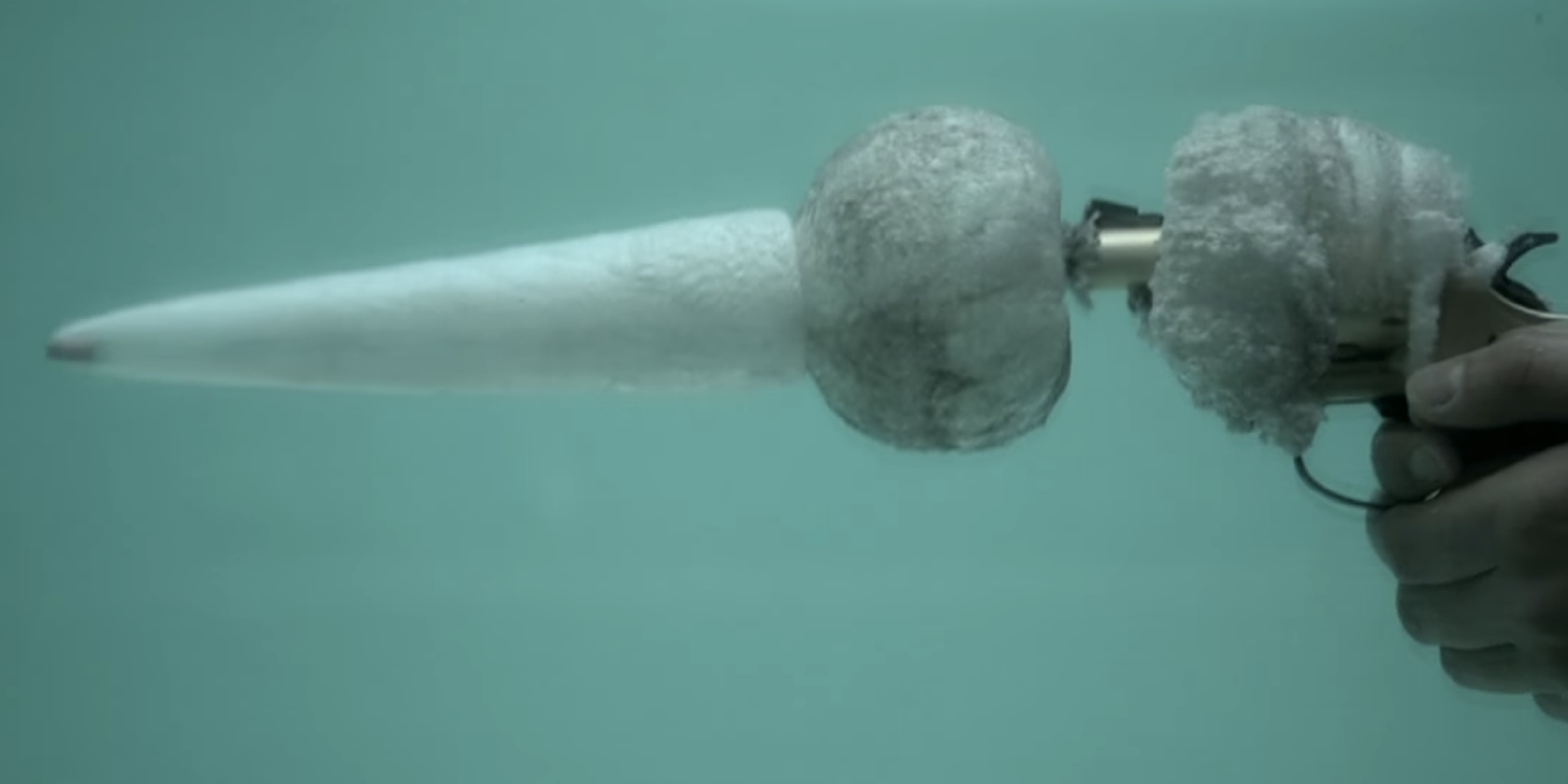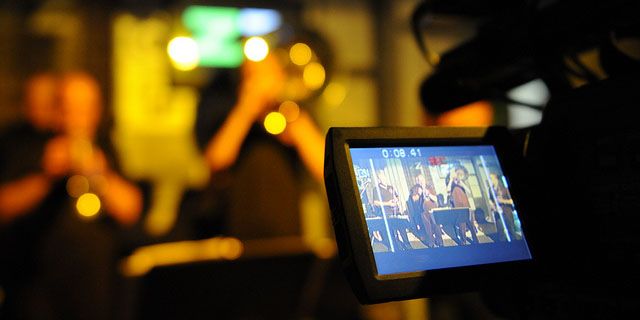With the advent of cameras able to take up to one trillion frames per second, slow motion footage is reaching new heights, enabling us to witness never-before-seen details in events that we usually take for granted.
Keep reading for a general overview of how to shoot super slow motion videos yourself along with several spectacular examples that will drop your jaw. (We've covered slow motion videos before, so think of this post as something of a sequel.)
How Slow Motion Works
Simply put, when you're recording slow motion videos, you're taking a high number of photos very, very rapidly, then playing them back very, very slowly. This means capturing 120 to 300+ frames per second (FPS) for traditional slow motion, but upwards of 100,000 FPS for high-octane slow motion videos of bullets flying past the camera.
When it comes to playing back those videos, this should be done at a comfortable rate of 24-30 FPS. A single second or less of recording, therefore, yields much longer than this in terms of actual footage.
In essence, the overall quality of your slow motion video depends largely on how fast your camera or video camera can take high quality shots. Many lower-end SLR cameras may only shoot at 60 FPS, meaning that with the standard video footage being 30 FPS, you'll only be able to slow the footage down by half.
This isn't nearly enough for what we want. Even at 300 FPS, you're not yet in super slow motion territory. For that, we're going to need to go much, much faster.
What Do I Need for Super Slow-Mo?
First, you'll need to find a device that can record at a high frame rate without loss of quality. The main things to pay attention to here are the FPS that the camera can record at and the shutter speed. For instance, the Nikon J2 claims to record at 1200 FPS, but in reality, the quality at those speeds seems to be dire.
Before choosing a camera to use for your super slow-mo videos, search YouTube for reviews and sample footage to see what's possible, i.e., if your camera claims to shoot at 300 FPS, search "[Camera Name] 300 FPS" and you should be able to find some examples.
When you're shopping around, however, I'd recommend looking for a camera that can capture at least 600 FPS and obeys the reciprocal frame rate rule. (Double the FPS and take the reciprocal.) This means that a 600 FPS camera should be able to handle a shutter speed of 1/1200th of a second.
The faster the shutter speed, the crisper the shots will be -- provided you have ample lighting -- and a steady set-up (tripods are recommended, though not compulsory, as slowing down your footage does reduce the effects of camera shake). For a few additional tips, check out our article on recording in slow motion.
After the shooting comes the editing of your footage. We've written before about editing slow motion video, so I won't go into that here, but there are plenty of options for online video editing and video editing in Linux, too.
When it comes to actually choosing a camera, here are a few suggestions that record at varying frame rates. Again, be sure to check out sample footage for the camera you're considering to ensure it can achieve the effects you're after. The list starts with the "worst" options and gets better as you go down, ending with a few high-end cameras that'll get the job done well.
- iPhone 6 and Samsung Galaxy Edge (60 FPS)
- LGViewty (120 FPS)
- Fastec TS3 (720 FPS)
A Few Examples & Their Set-Ups
Now that it's understood what we can expect from different speeds, let's take a look at what's actually possible with cameras up to a mind-boggling one trillion FPS. Today's technology allows us not only to be entertained by the fascinating world of slow motion, but also to learn along the way.
Skateboarding (600 FPS)
This speed is good for those "slightly" impressive slow-mo videos, such as a romantic kiss or a cool trick at the skatepark. It's a great starting point to get into quality slow motion that can show you some pretty impressive detail. This particular video was recorded with a Redlake N3 high-speed camera.
Ink Physics (1000 FPS)
Filmed at 1000 FPS with the Phantom Flex4K, this beautifully hypnotic video of ink being dropped in water shows what can be done with those relatively "slower" super slow-mo speeds.
Fast Wildlife (1200 FPS)
If you want to be able to see inspiring detail, 1200 FPS and higher is where things really start to get interesting. For those of you who can't afford a camera at this high speed, GoPro HD Hero 2 is able to capture slow-mo footage at 120 FPS, which can be slowed down further with the video editing package, Twixtor. There is a loss in quality, but in terms of getting started, this is a pretty impressive setup.
Note: The video below is not recorded with a GoPro.
Getting Punched in the Face (5000 FPS)
We can't have a post about super slow-mo without the obligatory punch-in-the-face video, can we? This one was recorded at 5000 FPS using the Photron SA1.1.
Bubble Bursting (18,000 FPS)
The Slow Mo Guys YouTube Channel is full of incredible super slow motion videos like this one where the speed of a bubble popping was slowed down by over 700 times using the Phantom v1610 and a macro lens, which shoots at 18,000 FPS at 720p.
Bullets Through Water (27,000 FPS)
Another one from the Slow Mo Guys, but this time recorded using the V1610 [Broken Link Removed] which records full HD at 18,000 FPS, but can be increased to 27,000 by lowering the resolution. This might just be one of the most amazing videos I've ever seen.
Bursting a Balloon (60,000 FPS)
With the help of a Phantom V2010, we're able to see the surprising beauty of busting an over-inflated a balloon, leaving some very surreal effects in play.
Smashing a Prince Rupert's Drop (130,000 FPS)
Using a Phantom V1610 at 130,000 FPS, we get to see the mystery of the Prince Rupert's Drop in all it's splendor. This is a piece of glass that's pretty much impossible to smash, but just nipping the narrow end causes the entire piece to explode.
Shattering CDs (170,000 FPS)
In this video, a compact disc is spun and shattered at 23,000 RPM while being recorded at an incredible 170,000 FPS using the Phantom V2511, which, at its lowest resolution, can capture 1,000,000 frames per second. In the few seconds that this video was being recorded, the footage measured out to 96 GB!
Bullet Impacts (1 million FPS)
These bullets are travelling at over 2,000 feet per second, and here we're able to witness their impacts into various materials in all their 1,000,000 FPS glory.
Light Rays (1 TRILLION FPS)
According to this video (a short documentary), rather than being a traditional camera, this array of 500 sensors are each triggered at a trillionth-of-a-second delay. This enables the viewer to actually see a ray of light moving across the screen.
This wasn't put together simply for fun, though. Practical applications could include medical imaging, scientific uses, as well as consumer photography.
What Would You Shoot?
Although super slow motion cameras don't come cheap, by using certain software, we're able to help lower-end cameras record footage for playback at even slower speeds. Although this will reduce overall quality, it gives us all a greater opportunity to play around with slower slow motion than we were previously able to.
And if you're lucky enough to get your hands on a camera capable of recording full HD at whopping frame rates, we'd love to see what you record!
If you could ask someone with a super slow motion camera to record something for you, what would it be?
Image Credit: Underwater Bullet 27,000 FPS Via The Slow Mo Guys, Camcorder Footage Via U.S. Army Europe Images


